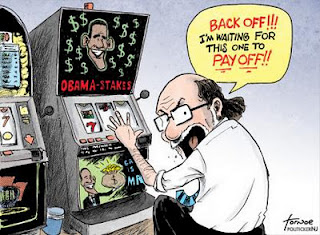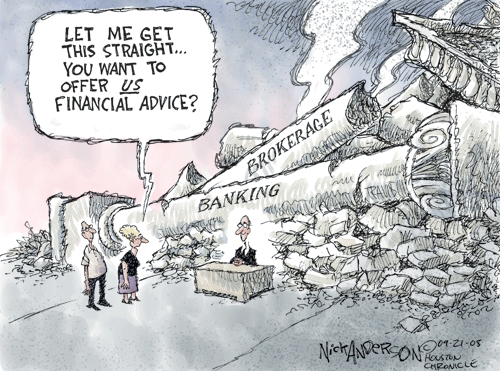
If everything seems to be going well, you have obviously overlooked something.–Steven Wright
SPNK: Can you Find the ticking bomb?
Anyone who specifically points out in the documents (see link below) where there is guaranteed devastation for the common shareholders will receive an A+ and an email prize.
If someone has posted a reply in the comments section, try not to read it, and think through the case on your own. Why are we in the world of Penny stocks, pump and dump stock schemes and Mafia-controlled companies–far, far away from our cherished franchises like IBM. Colgate, and Stryker? Sometimes if you invert, you can learn more about financial statements and human nature.
Skim through the 115 pages and focus on the critical areas. Tomorrow evening I will post my analysis of this document. The goal is to get you to pick out the danger areas. Obviously, this company has little financial value based on its assets and operations, but what is particularly lethal to any shareholder?
Good luck!
SNPK’s Financials:http://www.scribd.com/doc/85185922/SNPK-Financials
Guess how stocks like SNPK are sold:
http://www.youtube.com/watch?v=4zakyg3thfY
http://www.pennystockresearch.com/nsrs-csoc-pump-and-dump-alerts-february-1-2012/
I just received an email alert:
Dear valued subscribers,
SNPK closed at 70 cents today. Getting one step closer to multi dollar territories. We are absolutely confident of the massive potential this pick holds.
If it can just reproduce a fraction of the gains our last pick experienced it would still hit multi dollar levels.
Tomorrow may be one of the last opportunities our members will have to buy SNPK under a dollar.
The company announced this morning that its product, Clotamin, will be sold in about 70 different Discount Drug Mart locations around Ohio. This is on top of the product being available in 9 different states already, and being just picked up by Dakota Drug Inc. for distribution.
Those of you who did buy SNPK a few days ago and are holding are already up a lot.
Those of you who didn’t buy it yet are definitely considering to place an order first thing in the morning.
Do you remember how much our last pick soared? If you had just put $1,000 at our initial alert and and liquidated into near multi dollar levels you could’ve pulled more than $20,000 within 2 months. Not a bad ROI when the S&P returns around 8% a year on avg.
If you invest in anything with 8% return such as the S&P that same $1,000 will take you 40 years to turn into $20,000. As we just mentioned our last pick could have potentially created 40 years’ value in just weeks. Then you could possibly do it all over again with our next pick after it (which in this case is SNPK).
It is already up almost double since our initial alert 4 short days ago. That same gain would take 9 years to produce with the S&P.
The company is in negotiations with a major NBA star to support their products. Let’s stay tuned as this is important information!
SNPK has been steadily climbing every day! Our members couldn’t be happier!
http://www.zdnetasia.com/stock-pump-and-dump-spam-makes-comeback-62301948.htm
Stock pump-and-dump spam makes comeback
By
Ellyne Phneah, ZDNet Asia on September 6, 2011
News of the global debt crisis is driving pump-and-dump stock scams in volatile markets, enabling spammers to make profits by artificially “pumping” up stock prices so as to sell cheaply purchased stocks, note a new report by Symantec.Released Monday, the
Symantec August 2011 Intelligence Reportrevealed that spammers are seeking to reap from fluctuations in the turbulent financial markets, by sending large amounts of spam related to certain “pink sheets” stocks, in an attempt to “pump” the value of these stocks before “dumping” them at a profit.”Pink sheets” are typically over-the-counter stocks of companies that are not required to submit financial statements to the U.S. Securities and Exchange Commission.”With the world still reeling from the recession, the stock markets are now in turmoil from the increasingly global credit crisis and the specter of a ‘double dip recession’, whereby the [world] economy is expected to again tank after a brief rally,”
said Samir Patil, a security researcher at Symantec, in a blog post.According to Paul Wood, senior intelligence analyst at Symantec’s cloud business, scammers can make “substantial profits in a matter of days” with well-executed pump-and-dump spam campaigns. “
In the current turbulent environment, many people may be convinced to invest in stocks that scammers claim will benefit from the market turbulence,” he pointed out in a statement.
In a typical pump-and-dump stock scam, spammers promote certain stocks to inflate the price as much as possible so they may then be sold before their valuation crashes back to reality, said Symantec. The spam for these scams tries to convince the prospective investor that the cheap or penny stock is actually worth more than its valuation, or that it will soon skyrocket.
However, most of these claims are misleading or false, the vendor warned in its report.
In a successful campaign, the influx of spam will artificially drive the stock’s price to a point where scammers decide to sell their shares. This usually coincides with them ending the spam campaign, which could reduce interest in the stock, helping to drive the valuation back to its original low price, which could also be exploited in the market.
Most of the pump-and-dump spam originate from the United States and China, while a percentage is being generated from other countries in Asia. The majority of the attacks target North American users, Symantec revealed.
The report also noted a deluge of penny stock spam promoting Resource Exchange of America Corp (RXAC.PK) stocks whereby messages were full of irrelevant line breaks and spaces between words.
The e-mail headers contained broken words such as “Stocks” and “money” with poorly translated non sequiturs throughout the message such as “United States still an AAA country, Obama says?!”.
Other examples of e-mail subjects include “Stocks Ready to Bounce?”, “There is a MASSIVE PROMOTION underway NOW!” and “Been right on the money”.
In order to avoid falling prey to e-mail scams such as pump-and-dump scams, users should create a spam filter, never respond to spam and get multiple e-mail addresses for multiple purposes, Stephanie Boo, regional director for Symantec’s cloud business, advised.
“The Internet world is a borderless one. Today’s volume and sophistication of threat activities have increased substantially and cybercriminals continue to be motivated by financial gains,” she said in an e-mail. “Pump-and-dump scams are just one of the many tactics that cybercriminals leverage to attack consumers and enterprises alike.”
—
Cheer up and look at the bright side of life
http://www.youtube.com/watch?v=L2Wx230gYJw&feature=related









